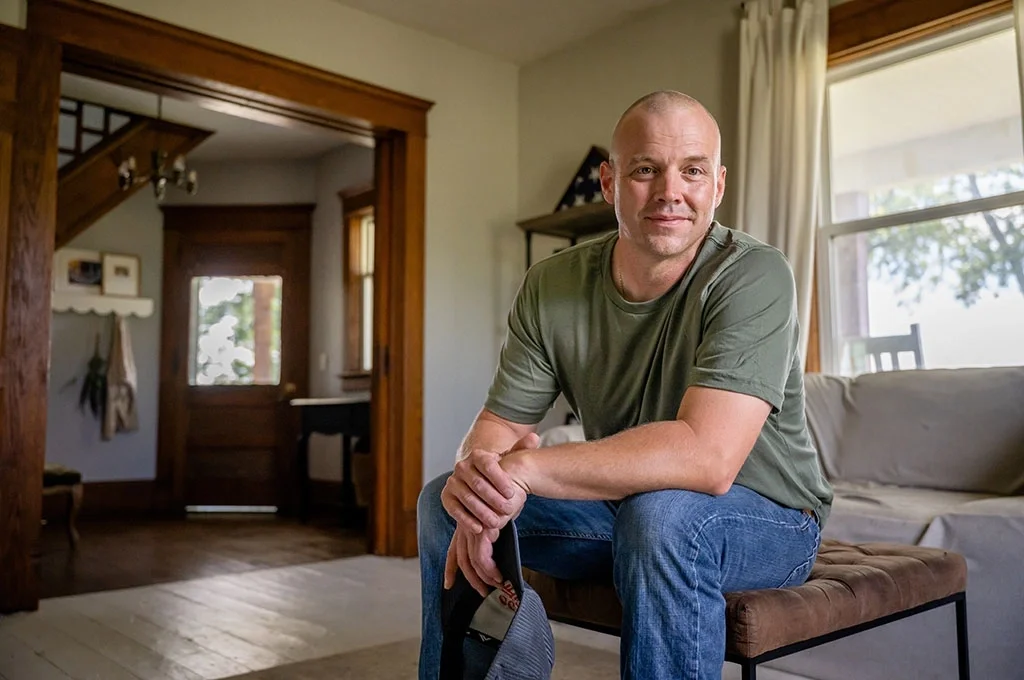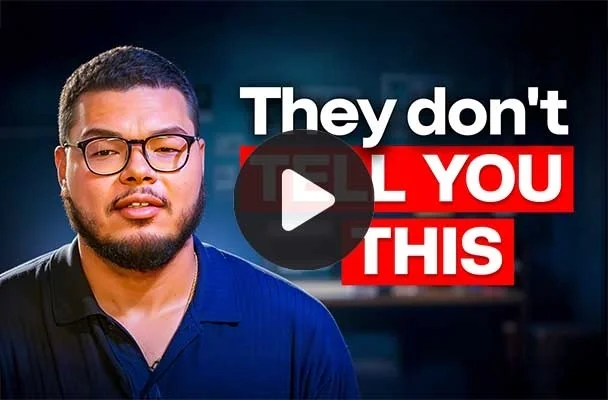
Veteran Emergency Fund
Financial emergencies can hit anyone hard, but veterans face unique challenges: irregular VA payments, disability rating changes, and the financial adjustment that comes with leaving active duty.
However, creating a contingency plan that includes a veteran emergency fund, a savings reserve designed to keep you stable when unexpected expenses arise, can ensure you’re better equipped to deal with life’s curveballs.
This guide covers how to do just that.
What a Veteran Emergency Fund Is (and Isn’t)
A veteran emergency fund is a personal savings reserve, ideally enough to cover three to six months of essential expenses. It’s meant for true emergencies, such as:
- A missed paycheck or benefit delay
- Sudden car or home repairs
- Medical bills or family travel in a crisis
Instead of relying on a loan or grant (which can be helpful), it’s adding another buffer between the need to do so because it’s your money in one of your accounts.
Types of Financial Support During Emergencies
|
Type |
Source |
Repayment Required? |
Purpose |
|---|---|---|---|
|
Personal Emergency Fund |
Your savings account |
No |
Long-term self-reliance and financial stability |
|
Relief Programs |
VA or nonprofit |
No/Low |
Temporary external aid during a crisis |
|
Credit or Loans |
Bank or lender |
Yes (with interest) |
Short-term borrowing, not sustainable long-term |
While relief programs can help during hardship, having your own fund is not only more readily accessible but also keeps you independent and more stress-free in the long run.
How Much Should Veterans Save?
The “right” amount to save for a veteran emergency fund depends on your situation. Use the table below to help calibrate a realistic target and savings goal that fits your lifestyle.
Veteran Emergency Fund Savings Targets
|
Veteran Status |
Recommended Goal |
Suggested Monthly Savings Target |
Typical Savings TImeline |
Common Challenges |
|---|---|---|---|---|
|
Transitioning Veteran |
3–4 months of living expenses |
$300–$600/month |
8–16 months |
Job gap between separation and civilian work |
|
Disabled Veteran (Fixed Income) |
4–6 months of expenses |
$200–$400/month |
12–24 months |
VA payment delays or disability reevaluation |
|
Working Veteran |
6 months of expenses |
$400–$700/month |
12–24 months |
Family costs, rising living expenses |
It’s okay to start small. Even $25 per paycheck adds up over time. Just focus on consistency rather than perfection.
Where to Start a Veteran Emergency Fund
A good emergency fund is accessible, safe, and separate from daily spending.
Recommended Savings Options
|
Account Type |
Accessibility |
Pros |
Ideal For |
|---|---|---|---|
|
High-Yield Savings Account |
Easy (online transfers) |
FDIC-insured, earns 4%+ interest |
Everyday emergency fund |
|
Credit Union Savings (e.g., Navy Federal, PenFed) |
Easy |
Low fees, veteran-friendly, flexible transfers |
Veterans on fixed incomes |
|
Money Market Account |
Moderate |
Higher dividends with larger balances |
Long-term fund storage |
|
Treasury-backed Savings Bonds or T-Bills |
Moderate |
Low market risk, government-secured |
Veterans seeking stable returns with slightly longer access periods |
Keep your veteran emergency fund separate from your checking account. This will reduce the temptation to spend and help you track your progress clearly.
Timeline for Building Your Veteran Emergency Fund
Building your fund doesn’t happen overnight, and that’s okay. Like any goal worth attaining, it takes steady effort and a clear plan. The key is to break the process into achievable milestones so it feels manageable instead of overwhelming.
Start small, stay consistent, and remember that even small wins add up over time. Here’s a simple roadmap to guide your progress:
Veteran Emergency Fund: Step-by-Step Savings Milestones
|
Stage |
Timeframe |
Goal Amount |
Example Strategy |
|---|---|---|---|
|
Starter Fund |
1–3 months |
$500–$1,000 |
Redirect $25–$50 per paycheck or use part of your tax refund |
|
Stability Fund |
6–12 months |
1–3 months of expenses |
Automate monthly transfers or deposit part of your VA benefits |
|
Full Security Fund |
12–24 months |
3–6 months of expenses |
Keep contributing small amounts until your fund can cover housing, food, and utilities comfortably |
Visual idea for tech: “Crisis-readiness ladder “$500 (Starter) → $3,000 (One Month) → $6,000+ (Three Months), etc.
Smart Strategies to Build (and Protect) Your Fund
Building your emergency fund is all about strategy and discipline; you also need to ensure you can continue living on your income while saving. Here are some savings strategies:.
Practical Ways to Grow Your Fund
- Automate transfers: Schedule automatic savings right after each VA or paycheck deposit.
- Save windfalls: Use tax refunds, bonuses, or VA back pay to make larger jumps.
- Cut low-value expenses: Pause unused subscriptions or reduce takeout for a month — redirect the savings.
- Use military-friendly banks: Many credit unions offer special “round-up savings” features that transfer spare change into your savings automatically.
Protect Your Fund
- Only use your savings fund for true emergencies (housing, food, transportation, medical care).
- Refill it after withdrawals.
- If it makes sense, prioritize savings accounts over investments. Liquidity can be just as necessary or even more important than returns.
Veteran Relief Programs
If you’re working toward your first cushion but hit a setback, legitimate relief options can help stabilize you.
Trusted Resources for Temporary Assistance
|
Program |
Type |
Purpose |
|---|---|---|
|
VA Hardship Relief (Debt Management Center) |
Temporary suspension or waiver of VA debt |
Prevents collections during hardship |
|
Operation Homefront |
Nonprofit grants |
Short-term help for rent, utilities, or groceries |
|
USA Cares / PenFed Foundation |
Emergency financial assistance |
Covers urgent bills for veterans in transition |
|
State Veterans Emergency Funds |
One-time grants |
Rent, utilities, or transportation emergencies. Available in many states |
How to Stay Motivated and On Track With Your Savings
Saving can take time to build, especially on a fixed income, but progress builds momentum. The key is staying engaged with your goal so it doesn’t fade into the background. Here’s how to make it easier:
- Name your goal: Label your savings account “Veteran Emergency Fund.” It builds accountability.
- Track progress: Many banks show charts of growth. Use that as motivation.
- Reassess twice a year: Adjust your target as your income or expenses change.
- Celebrate milestones: When you hit your first $500, acknowledge the win. That’s financial discipline at work.
Financial Readiness You Can Count On
Creating your veteran emergency fund will help give you peace of mind when life’s little speed bumps occur. It means fewer sleepless nights worrying about bills and more control when the unexpected happens.
Start where you are, even if it’s small. Build at your own pace, and use the resources available to you along the way. Every dollar you set aside is proof of your discipline and resilience, qualities you’ve already shown in service.
You’ve handled harder challenges before. This one just happens to involve a savings account.
FAQs
Q: What’s the best way to start saving if I get paid irregularly?
A: Base deposits on your smallest expected paycheck. Automate that amount so every VA or work payment still contributes something.
Q: Should I include VA disability or pension payments when calculating expenses?
A: Yes. Count all reliable income and recurring costs so your fund truly covers your essential monthly needs.
Q: Is there a limit to how much I should keep in my emergency fund?
A: Once you’ve saved about six months of expenses, you can slow contributions and redirect new savings to long-term goals.
Q: Can my emergency fund be used for major planned expenses, like moving or buying a car?
A: No. Keep it strictly for unplanned emergencies. Create a separate “future expenses” account for planned costs.
Q: What should I do if my savings goal feels overwhelming?
A: Break it down into milestones. For example, aim for $500, then one month of expenses, then three. Celebrate each step.









